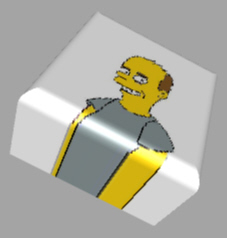

A quick guide to satellite dishes and lnbs
The basics
One of the most important parts of any satellite system is the dish. The signal strength is determined by the amount of signal reflected off the dish. There are three types of reflectors as shown below.
Satellite dishes
Satellite dishes collect the very weak signals from the satellites, which are orbiting round the Earth in geo-stationary orbit. This means the satellite appears to be in the same position in the sky at all times, eliminating the need for expensive tracking equipment at your end.Once the signals from the satellite hit the dish they are focused down to a small point and feed into the LNB unit, which in turn send the signals down the cable to the receiver. There are three types of dish systems for watching satellite TV. Most common is the fixed dish type, which is used to receive one satellite position, e.g. 28.2°E for Sky Digital. If you wish to receive a more diverse range of channels a dual sat / multi-feed system is required. This picks up two or more satellites from a single fixed dish.The Lnbs are slightly offset to each other to receive different satellites, the principle is similar to that used in car headlights for high and dipped beams. The last option is the most expensive, but will give you the most channels, and this is to motorise the dish. The satellite dish can be aligned to many satellites, picking up channels from each satellite.
Prime Focus The dish aims directly at the satellite and has a central focus point. The disadvantage of this type of dish is that the LNB bracketry blocks some of the satellite signal and so this type tends to be used for larger dishes. This design does also have inherent strength.
Offset This type of dish has an offset focal point and has the LNB mounted on an arm at the bottom of the dish. It uses a larger portion of the dish to reflect the signal and is highly efficient. These types are the most popular today, the most common design for standard domestic dishes, and are generally the cheapest.
Dish sizes
The amount of signal received by a dish depends on its size. There are other factors to overall received signal strength, such as LNB sensitivity, dish type, cable length, etc, but the most critical is the dish size. In order to receive a good strong signal from a satellite, the size of the dish has to be taken into consideration.Satellites beam their signals down to Earth to defined areas. These areas are called footprints. Your location within the footprint and the power of the satellite will affect the amount of signal you can pick up. The signal becomes weaker as you move closer to the edge of the transmission footprint.
45 cm Sky's new DigiDish has been designed to receive signals from the Astra 2 satellites at 28.2°E in most parts of the UK.
60 cm This is the most common dish size used to receive the Astra 1 satellites from 19.2°E. It can also receive most of the channels from the Hot Bird satellites at 13°E.
80 cm This size is used to receive Astra and Eutelsat with a multi-feed bracket, allowing you to view two satellites from one fixed dish.
1.0m These dishes are very popular with motorised systems although they can also be used as a fixed system to pick up a less powerful satellite.
A rough guide to the size of dish required (worst case) for your area for a simple set-up with one LNB for some of the more popular satellites can be obtained from the chart below.
Satellite
Turksat 1C 42°E
Astra 2A 28.2°E
Astra 1A-1G 19.2°E
Eutelsat W2 16°E
Eutelsat Hot Bird 1-5 13°E
Eutelsat II F2 10°E
Eutelsat W3 7°E
Sirius 1-2 5°E
Thor 1-3 0.8°E
Intelsat 707 1°W
NileSat 101 7°W
Telecom 2B 5°W
NSS K 21.5°W
Intelsat 605 27.
5°W
Hispasat 1A-1B 30°W
Orion 1 37.5°W
South UK
80 cm
45 cm
60 cm
80 cm
80 cm
1m
80 cm
90 cm
1.5m
1m
1.2m
80 cm
1m
1m
1.2m
1m
North UK
1.2m
60 cm
80 cm
80 cm
80 cm
1.2m
80 cm
2.5m
1.5m
1m
2.5m
1m
1m
1.2m
1.8m
1.2m




